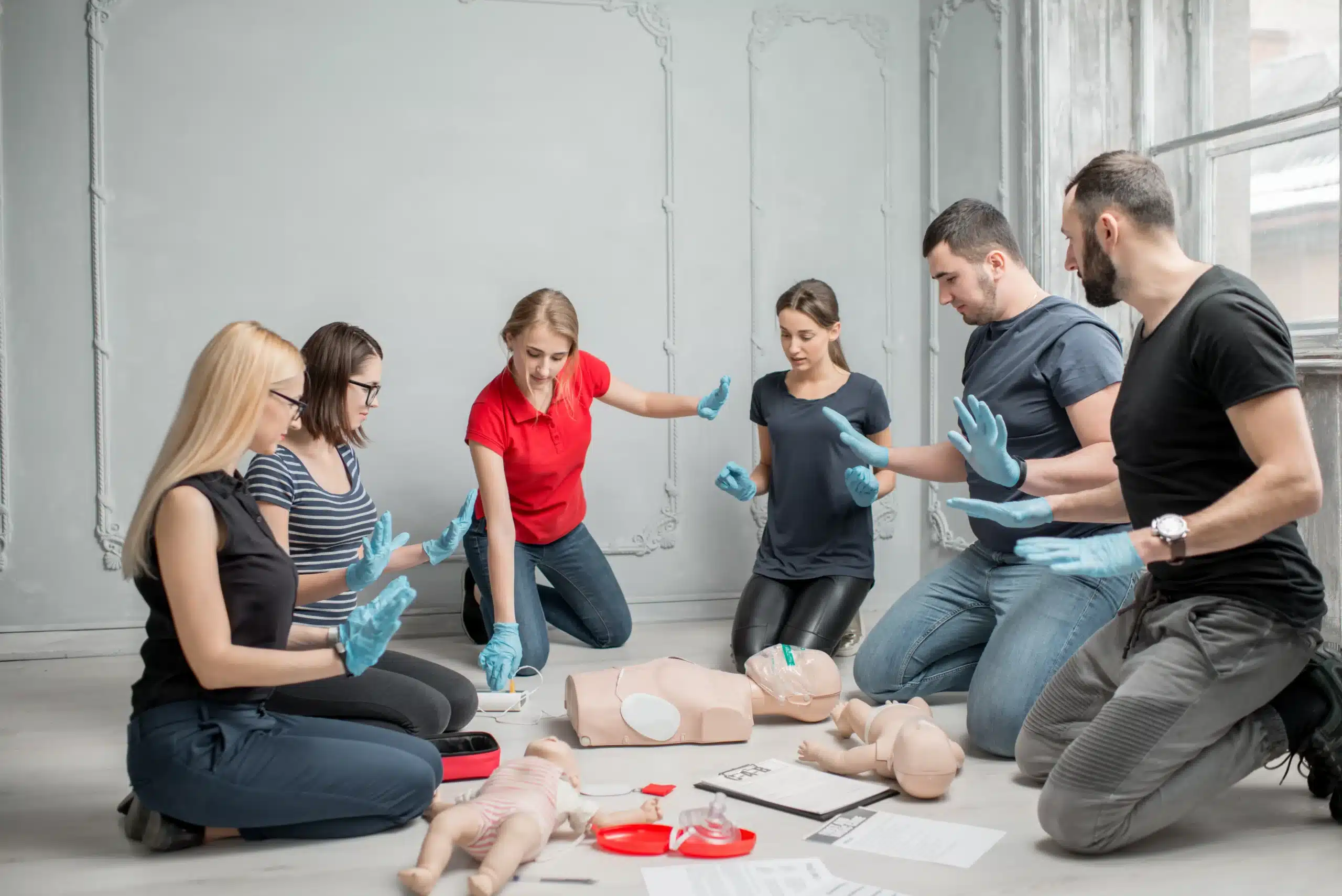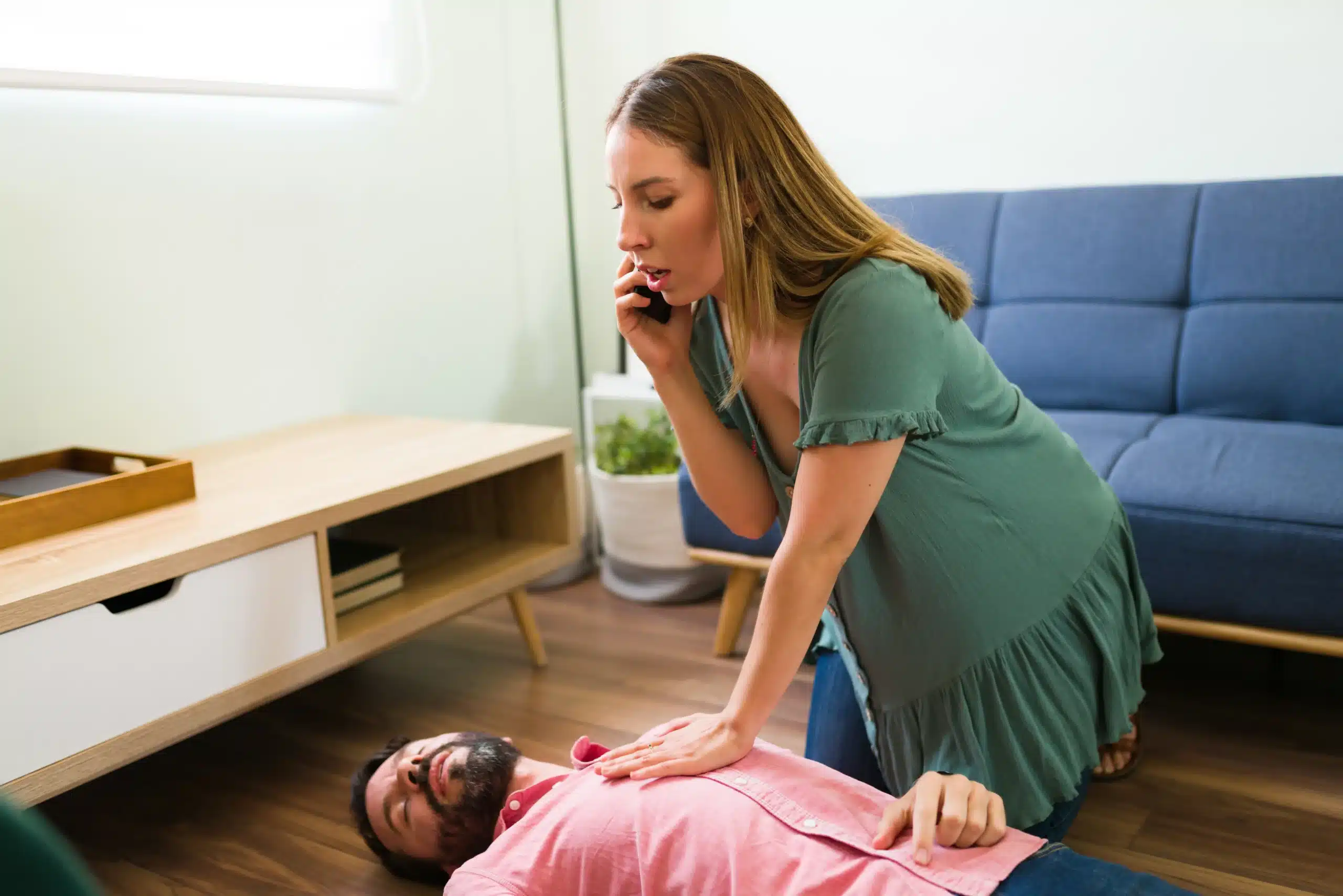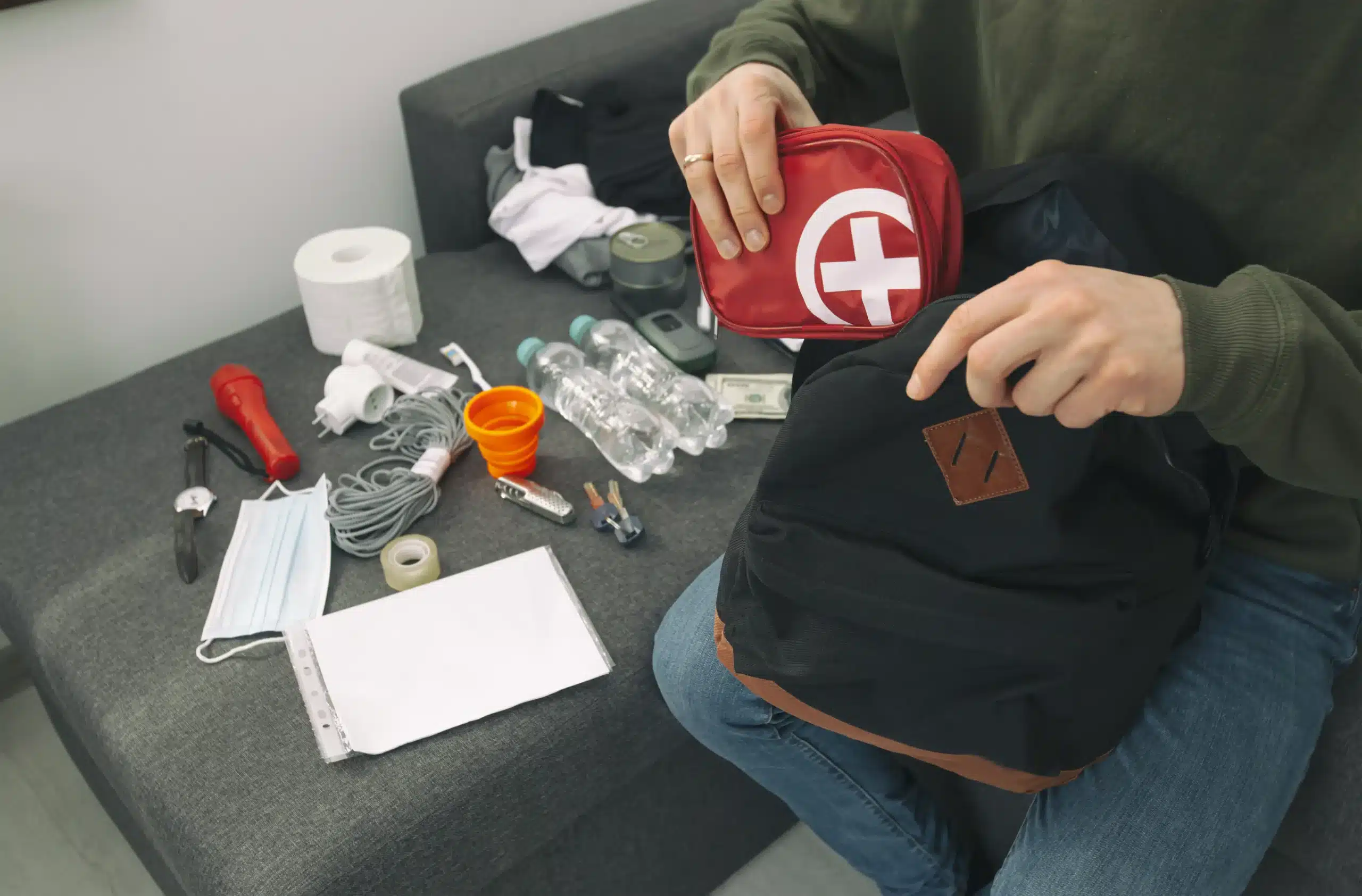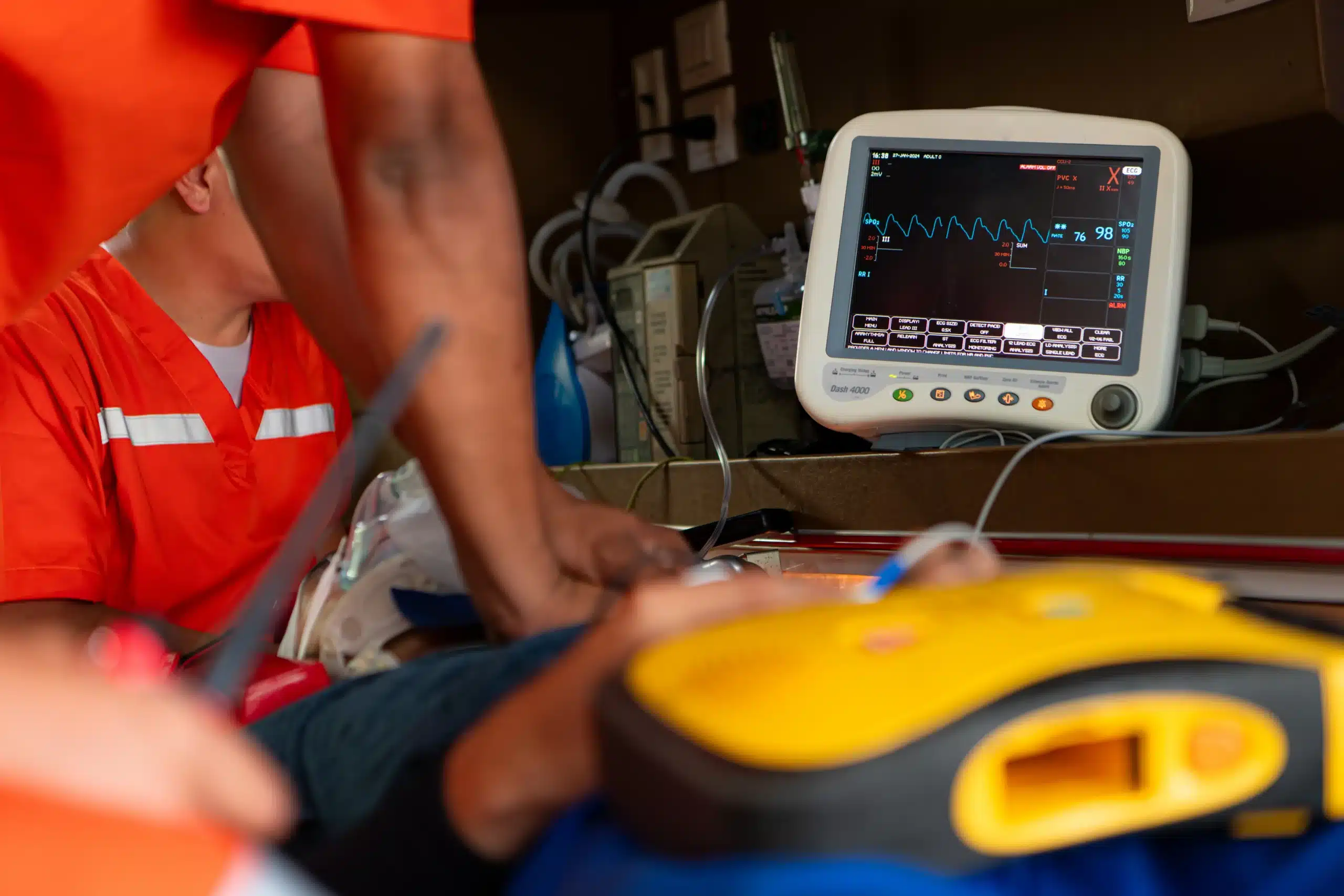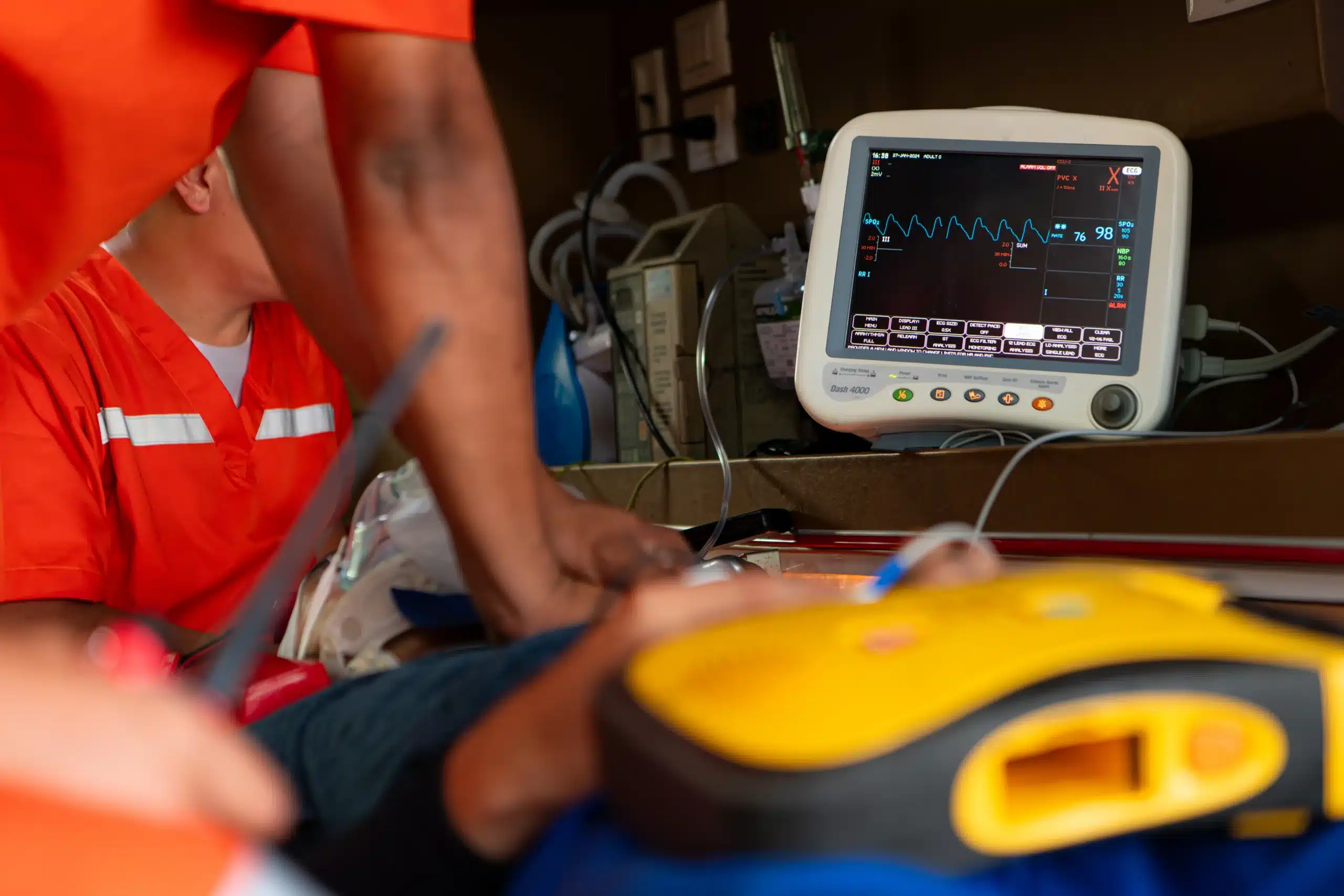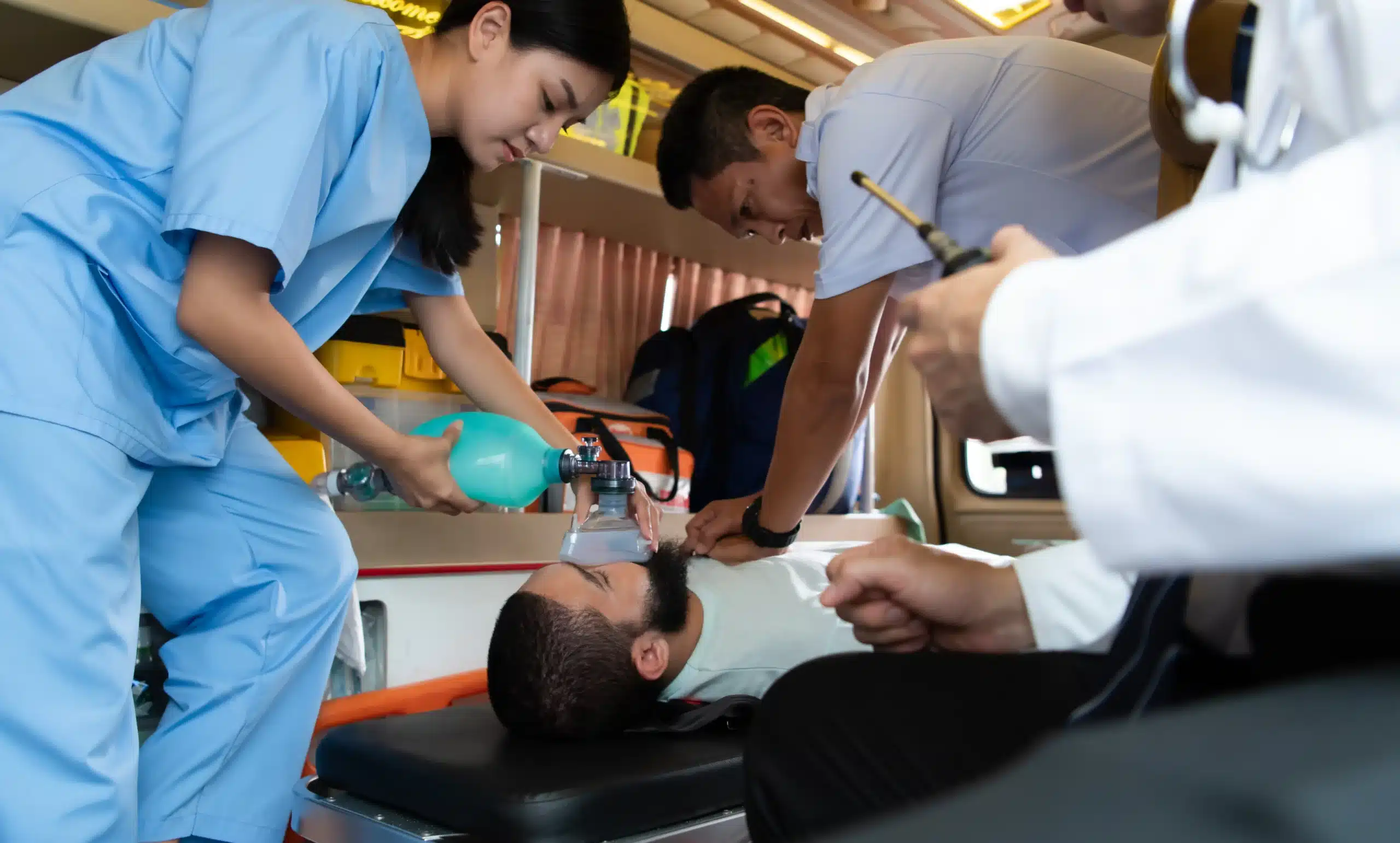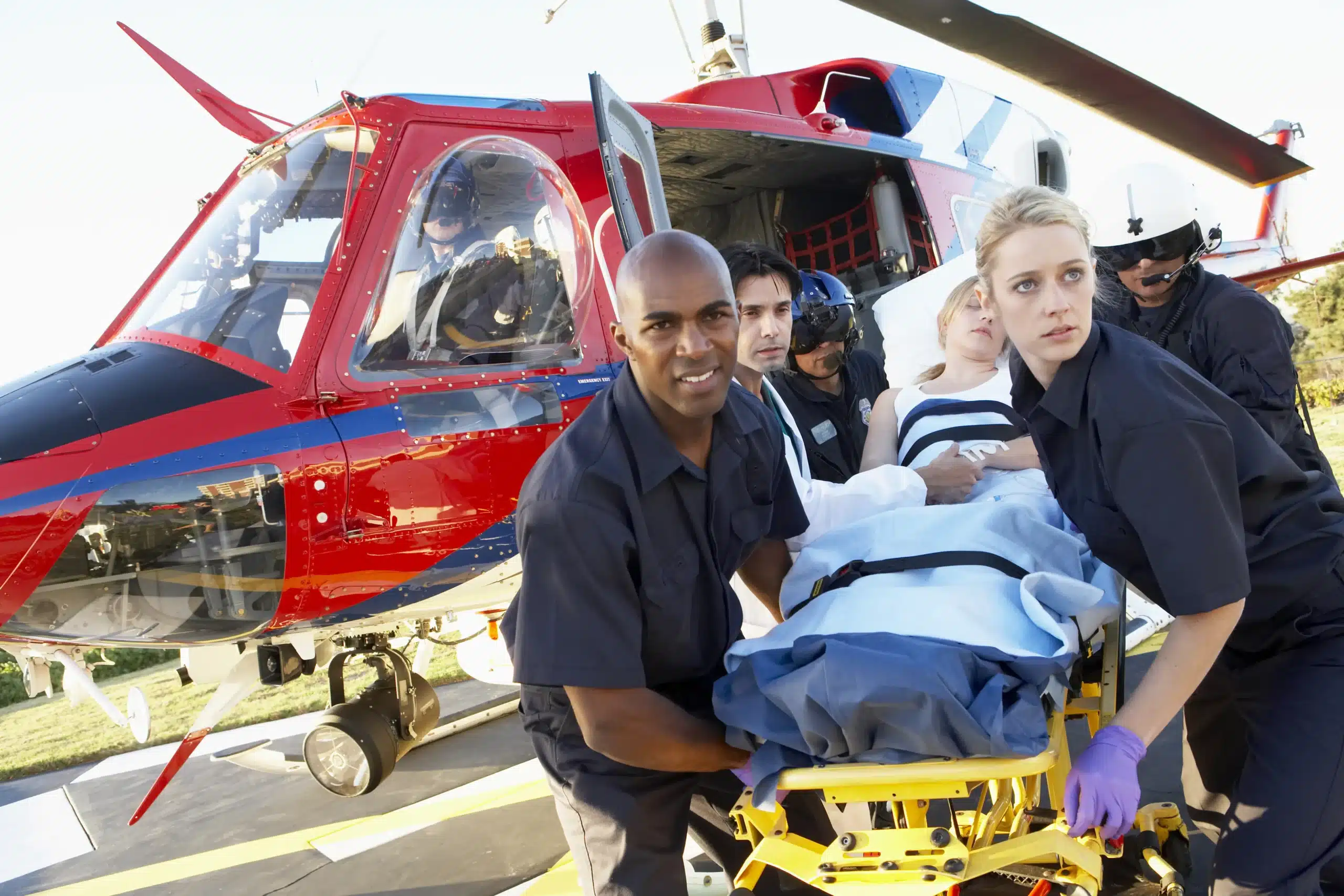Empowering yourself with life-saving skills starts with first-aid training. This guide is your one-stop resource for understanding the importance of first aid, finding the right training program, and becoming certified. Whether you’re searching for “first-aid classes near me” or exploring online options, we’ll cover everything you need to know. We’ll discuss the different types of first-aid training available, from basic wound care to CPR and AED use, and help you choose the best format for your learning style. We’ll also address common questions about cost, certification, and what to expect in a typical first-aid class.
Key Takeaways
- First-aid skills are essential for everyone: From treating minor cuts to responding to emergencies, first-aid training equips you with the knowledge and confidence to act quickly and effectively.
- Find the right training that fits your lifestyle: Explore various learning formats, including online, in-person, and blended learning, to find a course that accommodates your schedule and learning preferences. Consider factors like cost and certification type.
- Invest in yourself and your community: First-aid training is a valuable investment that can enhance your career prospects, empower you to help others, and contribute to a safer community. Look for reputable providers like Rocklin CPR Classes, the American Red Cross, or the American Heart Association.
What are First-Aid Classes?
First-aid classes equip you with the skills to handle medical emergencies until professional help arrives. These courses cover a range of topics, from treating minor injuries like cuts and burns to managing more serious situations like choking and cardiac arrest. Whether you’re a concerned parent, a healthcare professional, or simply someone who wants to be prepared, first-aid training can empower you to make a difference.
Basic First Aid
Basic first-aid training provides fundamental skills applicable in various settings. These courses often cover essential techniques like controlling bleeding, managing sprains, and treating minor burns. This type of training is valuable for anyone, from office workers to stay-at-home parents, as it prepares you to respond effectively to everyday injuries and accidents. It also helps build confidence in your ability to assist others in need. Basic first-aid training is often a prerequisite for more advanced certifications like those offered by the American Heart Association.
CPR and AED Training
CPR (cardiopulmonary resuscitation) and AED (automated external defibrillator) training teach you how to respond to life-threatening situations like cardiac arrest. These courses combine CPR techniques with instruction on using an AED, a device that can help restore a normal heart rhythm. Learning CPR and AED can significantly increase the chances of survival for someone experiencing cardiac arrest. This training is especially important for healthcare providers, but it’s also beneficial for anyone who wants to be prepared for a medical emergency. For those interested in becoming certified, CPR courses are readily available through organizations like the American Red Cross.
Specialized First-Aid Training
Beyond basic first-aid and CPR/AED training, there are specialized courses designed for specific needs and professions. For example, wilderness first aid caters to outdoor enthusiasts and teaches how to handle injuries in remote locations. Pediatric first aid focuses on caring for infants and children. These specialized courses provide targeted instruction and skills relevant to particular environments or populations. Healthcare professionals often pursue advanced certifications like ACLS (Advanced Cardiovascular Life Support) and PALS (Pediatric Advanced Life Support) to enhance their expertise in critical care situations. You can find more information on these advanced certifications on the Rocklin CPR Classes website.
Find First-Aid Classes Near You
Ready to learn first aid? Fantastic! Finding the right class is easier than you think. Whether you prefer online or in-person learning, plenty of options are available. Here’s how to find first-aid classes near you:
Search Online
The internet is a great resource for finding first-aid training. Start by checking the American Red Cross website, which offers various courses in different formats. A quick Google search for “first aid classes near me” will also uncover local providers like Rocklin CPR Classes, which offer flexible scheduling and group discounts. Many training providers list their schedules and course details online, so you can easily compare and find a class that fits your needs.
Explore Local Resources
Beyond online searches, consider local resources. Your city’s government website, community centers, or even local fire departments might offer first-aid training. Check with community organizations like libraries or recreation centers, too. These organizations often host first-aid courses or can connect you with local providers. For example, Rocklin CPR Classes offers various certifications, from basic first aid to advanced life support. Don’t underestimate word-of-mouth—ask friends, family, and colleagues for recommendations. They might have valuable insights or personal experiences to share.
Choose the Right Training Format
Deciding on the right training format depends on your learning style, schedule, and budget. Let’s break down the pros and cons of in-person, online, and blended learning for first-aid certification.
In-Person Classes
In-person classes offer a structured learning environment with a certified instructor guiding you through the material. This format excels in providing hands-on training, crucial for mastering skills like chest compressions, rescue breaths, and using an AED. In-person training often ensures you meet OSHA workplace requirements for demonstrating competency in first aid. The direct interaction with an instructor allows for immediate feedback and personalized guidance. However, in-person classes require a fixed schedule and may not offer the flexibility of other learning formats. Attending a class at a specific time and location can be challenging.
Online Courses
Online courses offer unparalleled flexibility. You can learn at your own pace, accessing course materials from your laptop or tablet whenever it’s convenient. This format often works well for those with busy schedules or limited access to physical class locations. However, online courses typically don’t include hands-on skill demonstrations. While convenient, they may not fully prepare you for real-life emergencies where practical application is essential. If you choose an online course, consider supplementing it with in-person practice sessions to solidify your skills.
Blended Learning
Blended learning combines the best of both worlds. You’ll complete the theoretical coursework online at your own pace, then attend an in-person skills session to practice what you’ve learned. This format offers the flexibility of online learning with the essential hands-on training component. Many organizations, including Rocklin CPR Classes, offer blended learning courses with flexible scheduling and potential group discounts. This approach allows you to absorb information at your own speed and then receive personalized feedback and practical experience from a certified instructor.
How Much Does First-Aid Training Cost?
Investing in first-aid training is a smart move, but understanding the costs involved is essential. Let’s break down the typical price range, factors influencing cost, and ways to save.
Average Prices
First-aid course fees vary quite a bit. Basic first-aid certification can range from $50 to $150. More advanced training, like courses that combine first aid with CPR, might cost $200 or more. The final price tag depends on several factors, so it’s always a good idea to check with specific providers in your area.
Factors Affecting Cost
Several things influence the cost of first-aid training. Course length is a big one—longer courses with more in-depth content generally cost more. The training provider’s reputation and location also play a role. Established organizations with experienced instructors may charge a premium. Overhead expenses, like the training facility and equipment, also factor into the overall cost. Finally, the type of certification offered can affect the price, with nationally recognized certifications sometimes having higher fees.
Cost Myths
One common misconception is that first-aid training is too expensive. While there are costs involved, think of it as an investment in your skills and ability to help others. Another myth is that online first-aid training is less valuable than in-person training. While hands-on practice is important, online courses can be a convenient and effective way to learn the basics. Just be sure to choose a reputable provider.
Discounts and Financial Aid
Look for ways to reduce the cost of your training. Many providers, including Rocklin CPR Classes, offer discounts for group bookings, which is great for workplaces or community organizations. Some organizations may also offer financial aid or scholarships, so it’s always worth asking. Remember, community fundraising and donations can sometimes help offset training costs, highlighting the community-wide benefits of first-aid preparedness. CPR Certification Now discusses some of these economic factors in more detail.
Get Certified in First Aid
Getting certified in first aid equips you with the skills to handle medical emergencies. Whether you’re looking for basic knowledge or more advanced certifications, understanding the different options and the importance of employer recognition is key.
Types of Certifications
Rocklin CPR Classes offers a variety of certifications to meet different needs. These include CPR and First Aid, Basic Life Support (BLS), Advanced Cardiovascular Life Support (ACLS), and Pediatric Advanced Life Support (PALS). Whether you’re a parent wanting to learn basic first aid or a healthcare provider seeking BLS or ACLS certification, we have a course for you. We also offer group discounts to make training more accessible.
Renew Your Certification
First-aid certifications typically expire after two years. Staying current with your certification ensures your skills and knowledge are up-to-date. Recertification is a straightforward process, often involving a refresher course. Check with your certifying organization or contact us for details on recertification requirements.
Employer Recognition
The American Heart Association (AHA) is a highly respected organization for CPR and first-aid training. Many employers seek AHA-certified individuals, as it demonstrates a commitment to high-quality training. Rocklin CPR Classes offers AHA-certified courses, giving you credentials employers value. This can be particularly helpful for healthcare careers or other fields where first-aid knowledge is essential. Plus, with our student discounts on BLS CPR courses, gaining these valuable skills is even more affordable.
What Happens in a First-Aid Class?
Knowing what to expect can ease any pre-class jitters. Here’s a glimpse into a typical first-aid class:
Course Structure
First-aid classes offer flexible learning options to fit your schedule and preferred learning style. You can find courses online, in-person, and in blended formats that combine online learning with in-person skills sessions. Online courses offer self-paced learning, accessible from your laptop or tablet. However, keep in mind that online-only courses typically don’t include the crucial hands-on skill demonstrations found in other formats. Blended learning is a popular option, giving you the convenience of online study with the benefit of practical, in-person training.
Key Curriculum
First-aid classes cover a broad range of essential topics to equip you for various medical emergencies. You’ll learn how to respond to choking, bleeding, strokes, heart attacks, allergic reactions, burns, broken bones, and more. The curriculum often aligns with guidelines from organizations like the American Red Cross, which offers training in First Aid, CPR, AED use, and other life-saving skills. This comprehensive approach ensures you gain a well-rounded understanding of emergency medical care. For those interested in CPR specifically, you can find more information on our CPR page.
Hands-On Practice
Beyond the knowledge, first-aid training emphasizes practical application. In-person and blended learning courses provide hands-on training with certified instructors. This experience allows you to practice essential skills like chest compressions, rescue breaths, and using an AED in a safe and controlled environment. Hands-on practice is invaluable for building confidence and ensuring you can effectively apply your knowledge during a real emergency. Many in-person and blended courses also meet OSHA workplace requirements, making them suitable for professional certifications. If you’re looking for group discounts on in-person training, check out our group discount options.
Prepare for Your First-Aid Training
Getting ready for your first-aid training doesn’t require a ton of prep, but a little planning goes a long way. Here’s how to set yourself up for success:
Gather Your Materials
Most first-aid courses don’t require you to bring much. A notebook and pen are helpful for jotting down notes, though many courses offer printed materials. Check with your chosen provider—like Rocklin CPR Classes—to see if they have specific material requirements. If you’re taking an online or blended learning course, ensure your computer and internet connection are reliable.
Study Tips
While you don’t need to cram for a first-aid course, familiarizing yourself with basic first-aid principles can be beneficial. Think about how first aid might apply to your daily life. Are you a parent, a coach, or a teacher? Tailoring your learning to your specific needs will make the information more relevant and easier to remember. Consider your environment when preparing, as some courses address workplace safety and the specialized needs of healthcare professionals.
What to Wear
Comfort is key! You’ll likely be practicing skills like CPR and bandaging, so wear clothing that allows you to move freely. Think loose-fitting pants or shorts and a comfortable top. Hands-on training is a core component of most first-aid and CPR classes, so be prepared for some physical activity. Avoid restrictive clothing or anything that might get in the way during practice scenarios.
Benefits of First-Aid Training
Knowing what to do in a medical emergency can make all the difference. First-aid training equips you with the skills to respond effectively and confidently in various situations, benefiting not only yourself but also those around you.
Be Prepared
Life is unpredictable. Accidents happen, and emergencies can arise anytime, anywhere. First-aid training gives you the tools to handle these unexpected events. Whether it’s a minor cut or a more serious injury, you’ll be prepared to assess the situation, provide immediate care, and potentially even save a life. This preparedness can bring peace of mind, knowing you can handle unexpected medical situations. MyCPR NOW emphasizes the importance of comprehensive first-aid training, especially in rural communities where access to immediate medical care might be limited. As StreetFriends.org points out, first-aid and CPR training are crucial for effective emergency response.
Career Advancement
In many professions, first-aid training is a valuable asset. It can open doors to new opportunities and enhance your existing career. Some jobs require formal certifications like Basic Life Support (BLS), Advanced Cardiovascular Life Support (ACLS), or Pediatric Advanced Life Support (PALS). Even if it’s not a formal requirement, having first-aid skills can make you a more desirable candidate. Employers value individuals who can take initiative in emergencies and contribute to a safer work environment. For more information on certifications, check out this helpful resource on first-aid training and certification. MyCPR NOW discusses how the economics of first-aid training impacts accessibility, highlighting the importance of making these skills available to everyone.
Help Your Community
First-aid training empowers you to make a real difference in your community. You become a valuable resource, able to assist others in times of need. Whether it’s helping a neighbor, responding to an incident in public, or volunteering at community events, your skills can have a positive impact. By being prepared and ready to act, you contribute to a safer and more resilient community. StreetFriends.org emphasizes the value of community-based first-aid and CPR training as an investment in safety and preparedness. MyCPR NOW highlights the role of local governments in promoting first-aid awareness, emphasizing the community-wide benefits of having these skills.
First-Aid Training Providers
Finding the right first-aid training program depends on your specific needs and location. Several reputable organizations and local resources offer comprehensive training. Here’s a closer look at some of your options:
Rocklin CPR Classes
Rocklin CPR Classes offers a range of certifications, including Basic Life Support (BLS), Advanced Cardiovascular Life Support (ACLS), Pediatric Advanced Life Support (PALS), and standard CPR/First Aid. They also provide specialized courses tailored to various professional needs. Serving Rocklin, Roseville, and Sacramento, CA, they offer discount group classes and flexible scheduling. Contact Rocklin CPR Classes directly to learn more about their programs.
American Red Cross
The American Red Cross is a leader in CPR and first-aid training. They offer various courses, including CPR/AED training, designed to prepare you for emergencies. Their programs are widely recognized and accessible across the country. You can easily find a class near you through their website.
American Heart Association
The American Heart Association (AHA) also provides a variety of certified courses, including BLS, ACLS, and PALS. These courses cater to both healthcare professionals and the general public. Many training centers offer AHA-certified courses, so check with local providers or search the AHA website for options.
St. John Ambulance
St. John Ambulance offers a range of first-aid training courses focusing on practical skills applicable in emergencies. Their training is designed for individuals in various workplace settings. Check their website for courses available in your region.
National Safety Council
The National Safety Council provides comprehensive first-aid training covering everything from basic techniques to more complex procedures like CPR and AED operation. Their courses equip individuals with the skills to respond effectively in emergencies. Explore their course catalog and find training near you.
Local Community Centers and Fire Departments
Local community centers and fire departments often provide first-aid training as part of their community outreach. These programs are typically designed to meet community needs and are often more affordable. Check with your local community center or fire department for upcoming classes.
Related Articles
- First-Aid Training in Sacramento: Your Complete Guide – Rocklin CPR Classes
- CPR Training in Roseville: Your Complete Guide – Rocklin CPR Classes
- First-Aid Training in Roseville: Your Guide – Rocklin CPR Classes
- Why CPR is Critical in Healthcare – CPR and First-Aid Training
- Workplace CPR and First-Aid Training Importance
Frequently Asked Questions
What’s the difference between basic first aid and advanced certifications like BLS or ACLS?
Basic first aid focuses on immediate care for common injuries like cuts, burns, and sprains. Advanced certifications like BLS, ACLS, and PALS delve deeper into life-saving techniques, particularly for cardiac arrest and other critical situations. These advanced courses are often geared towards healthcare providers and those in specialized roles.
How do I choose the right first-aid training format for me (online, in-person, or blended)?
Consider your learning style and schedule. Online courses offer flexibility, while in-person classes provide hands-on practice and direct interaction with an instructor. Blended learning combines online coursework with in-person skills sessions, offering a balance of convenience and practical experience.
Are there ways to save money on first-aid training?
Yes! Look for group discounts, often offered by providers like Rocklin CPR Classes. Some organizations also provide financial aid or scholarships. It’s always worth checking with your chosen provider for potential cost-saving options.
How often do I need to renew my first-aid certification?
Most first-aid certifications are valid for two years. Recertification usually involves a refresher course to ensure your skills and knowledge remain current. Check with your certifying organization for specific renewal requirements.
Why is choosing a recognized training provider like the American Red Cross or American Heart Association important?
These organizations offer standardized, high-quality training that is widely recognized by employers. Choosing a reputable provider ensures your certification holds value and demonstrates your commitment to maintaining essential life-saving skills.
